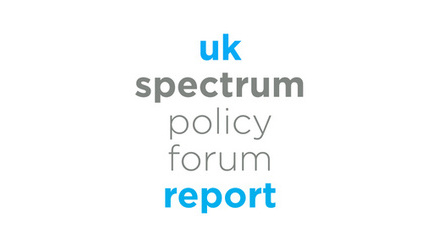UK SPF Cluster 1&4 Event Round-up: Landscape of NTN's and Spectrum Management
The UK Spectrum Policy Forum hosted a joint-cluster meeting to evaluate the landscape and the structure of the non-terrestrial network (NTN) market and the spectrum management challenges.
The event counted with presentations from a range of stakeholders, who dived into current use cases and services for direct-to-device connectivity. Following the business landscape, speakers presented their objectives within the present regulatory framework and preliminary thinking ahead of the World Radiocommunication Conference 2027 (WRC-27).
Landscape of non-terrestrial networks
Non-terrestrial network (NTN) is an abbreviation from 3GPP, referred to specifications enabling direct-to-device (D2D) from satellites and other aerial systems. 3GPP Release 17 was the first to standardize NTN in the n255 (L-band) and n256 (S-band).
The standards’ main objective is to provide an open specification enabling services to consumers’ handsets and other connected devices, defined as Internet of Things (IoT). Releases 18 and 19 will broaden the specifications to address services to the mobile broadband (MBB) terrestrial consumer market.
Within these standardisation efforts, two approaches for the delivery of D2D have emerged. The use of mobile satellite services (MSS) bands, which is when satellite players use frequencies allocated to provide D2D services. The other approach accounts for the use of mobile spectrum (MS), where the satellite operators planning to use mobile terrestrial spectrum must partner with mobile operators. In this scenario, satellite services are relying on the MNO, raising regulatory approval questions.
Advocates of the MSS band argue that D2D provision in the MS band generates a regulatory issue, because these bands where not allocated to the MSS services, it could create issues related to cross-border interference and in terms of spot beams and covering particular geographical areas.
Beyond these concerns, the limited amount of spectrum demands that trade offs are explicit from a business perspective to enable further NTN D2D services. On the one hand, D2D is a more profitable coverage solution than terrestrial networks, especially in low-traffic areas. On the other hand, as population density and level of traffic increases, D2D is not a viable alternative as the capacity is not enough to supply the demand.
Considering existing data, D2D could supplement coverage by filling the gaps in connectivity and providing supplier throughput. Additionally, D2D can become a more viable solution if terrestrial sites have been deployed beyond coverage viability and could be a capex saving solution for network operators and investors.
The UK (& CEPT / ITU) context
The second part of the event opened with an intervention from Ofcom international policy team to describe the spectrum management direction. Along with several of the international aspects discussed, the recent statement to the consultation Improving mobile connectivity from the sky and space highlighted the effort from regulators to gauge industry’s views before WRC-27.
As a result of the approaches described previously, WRC-27 has three agenda items (AI 1.12, AI 1.13, and AI 1.14) considering various issues associated with the use of spectrum for D2D.
- AI 1.12 follows on from discussions in the previous conference. Several bands considered within this AI have provided opportunities, with parallel work on CEPT looking at measures to accommodate its use.
- AI 1.13 intends to use the TN in a satellite rather than a base station. Despite some national regulations by the US, the general view is the regulatory environment needs to be developed further.
- AI 1.14 looking at MSS. In terms of the bands being looked at, there are some challenges in CEPT because the 2 bands listed are used by 3G services, raising a compatibility discussion.
Both agenda items 1.12 and 1.14 tackle a more traditional discussion for allocations for recognised services. As the sector evolves, questions about adoption of a robust regulatory environment or toward a light touch approach outline how Ofcom should organise the work in this field from a general regulatory perspective.
For instance, new joiners to the market find barriers to available spectrum, which are inaccessible or difficult to access. Hence there is a push to support a stronger position on AI 1.12 for low data rate (LDR) in the MSS band, along the harmonisation of the spectrum.
Other operators are against exclusive allocations of the MSS. Their interest is primarily in allocation for MSS without defining upfront narrowband, broadband, IoT, or LDR use cases. Interference issues relating in the MSS band need to be studied further for the European context, to account for cross boarder issues and regulatory interference looking into the D2D MSS bands.
After a very engaging discussion, the key outcome was that there are still critical questions that need answering around the delivery of these services until the next WRC.
Slides
Contact us

Tales Gaspar
Tales has a background in law and economics, with previous experience in the regulation of new technologies and infrastructure.

Sophie Greaves
Sophie Greaves is Associate Director for Digital Infrastructure at techUK, overseeing the Communications Infrastructure and Services Programme at techUK, and the UK Spectrum Policy Forum.




